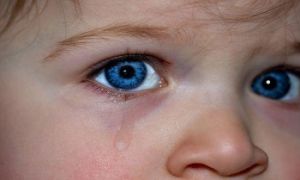Phonics is a method used to teach reading and writing by developing learners' ability to hear, identify, and manipulate phonemes and associating these sounds with their corresponding letters and letter patterns. The following article provides information on Key Concepts Of Phonics, Why Phonics Is Important, Benefits of Teaching Phonics, How To Teach Phonics, Activities, and more.
Key Concepts of Phonics
-
Phonemes: These are the distinct units of sound in a language. For example, the word "cat" has three phonemes: /k/, /æ/, and /t/.
-
Graphemes: These are the written representations of phonemes. For instance, the letter "c" in "cat" represents the /k/ sound.
-
Blending: This is the process of combining individual sounds to form words. For example, blending /k/, /æ/, and /t/ forms "cat."
-
Segmenting: This is the opposite of blending. It involves breaking down words into their individual sounds. For example, segmenting "cat" into /k/, /æ/, and /t/.
-
Decoding: This involves using knowledge of letter-sound relationships to read written words.
Why Phonics Is Important
Phonics provides children with a system for remembering how to read and spell words. It helps in:
-
Developing early reading skills.
-
Enhancing spelling and writing abilities.
-
Building a foundation for future reading success
Benefits of Teaching Phonics
-
Improved Reading Skills: Phonics helps children understand the relationship between letters and sounds, making it easier for them to decode new words and read fluently.
-
Enhanced Spelling: By learning the sounds associated with different letters and letter combinations, children can apply this knowledge to spell words correctly.
-
Boosted Confidence: As children become more proficient readers, their confidence grows. This can have a positive impact on their overall attitude towards learning.
-
Foundation for Learning: Phonics provides a strong foundation for future learning by giving children the tools they need to read, understand, and engage with written material.
-
Better Comprehension: When children can read words accurately, they can focus more on understanding the meaning of the text, leading to improved comprehension skills.
-
Language Development: Phonics instruction supports the development of oral language skills, including vocabulary and pronunciation, which are crucial for effective communication.
-
Engaging Learning Experience: Phonics can be taught through a variety of fun and interactive activities, making learning enjoyable and stimulating for young children.
How To Teach Phonics
Teaching phonics can be a rewarding experience, especially with preschoolers who are just starting their reading journey. Here’s a step-by-step guide to get you started:
Introduce Letter Sounds:
-
-
Start by teaching the most common sounds for each letter.
-
Use visual aids such as flashcards with the letter on one side and an object representing the letter sound on the other.
-
-
Teach Letter Formation:
-
Show children how to write each letter.
-
Use engaging activities like tracing letters in sand or forming letters with playdough.
-
-
Blending Sounds:
-
Teach children to blend individual sounds to form words.
-
Start with simple three-letter words (CVC words like "cat" or "dog").
-
-
Segmenting Words:
-
Teach children to break down words into their individual sounds.
-
Use activities like clapping out the sounds in words.
-
-
Practice with Decodable Books:
-
Provide books that use simple words children can decode based on their phonics knowledge.
-
Read together and encourage children to sound out words.
-
-
Use Games and Songs:
-
Incorporate phonics games and songs into your teaching to make learning fun.
-
Examples include phonics bingo, sound sorting, and phonics hopscotch.
-
-
Reinforce with Daily Activities:
-
Integrate phonics into everyday activities.
-
Ask children to identify sounds in words around them, such as during snack time or while playing outside.
-
Activities That Teach Phonics
-
Phonics Bingo: Create bingo cards with letters or pictures representing different sounds. Call out sounds, and children can cover the corresponding letter or picture.
-
Sound Sorting: Use a variety of objects or pictures and have children sort them into groups based on their beginning sounds.
-
Alphabet Hop: Write letters on the ground with chalk or use letter mats. Children hop to the letter that makes the sound you call out.
-
Phonics Puzzles: Create puzzles where children match letters or groups of letters with pictures of objects that start with those sounds.
-
Interactive Stories: Read a story and pause to let children identify words that start with a particular sound.
-
Rhyming Games: Play games where children find words that rhyme or create their own rhyming words.
-
Letter-Sound Hunt: Hide objects or pictures around the room and have children find them and match them to the corresponding letter sound.
-
Playdough Phonics: Use playdough to form letters and let children shape them while saying the sound each letter makes.
-
Phonics Songs and Chants: Use songs and chants that emphasize letter sounds and blends to make learning memorable.
-
Mystery Bag: Fill a bag with objects that start with different sounds. Children take turns pulling out an object and saying its sound.
These activities can make phonics learning fun and interactive, helping children develop their reading and spelling skills in an engaging way.
Further Reading
Phonics Worksheets
Letterland Phonics
Beginning Letter Sounds Posters
Literacy Activities For Children In Early Childhood
Phonemic Awareness in Young Children
Developmental Sequence Of Phonological Skills Posters
Alphabet Stew Poem Posters
First Sounds Match Up
Blank Letter Beginning Sounds Worksheets




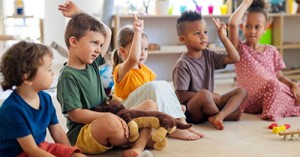


 Open ended questions cannot be responded to with one word answers such as yes or no. These types of questions enables a child to provide
Open ended questions cannot be responded to with one word answers such as yes or no. These types of questions enables a child to provide During your child’s preschool years, an important milestone begins to emerge. This is the development of pre-writing skills. Pre-writing skills are used to encourage, develop
During your child’s preschool years, an important milestone begins to emerge. This is the development of pre-writing skills. Pre-writing skills are used to encourage, develop Open ended materials enables children to play freely. They are objects that have no rules to follow, use or function. Raw materials that can be
Open ended materials enables children to play freely. They are objects that have no rules to follow, use or function. Raw materials that can be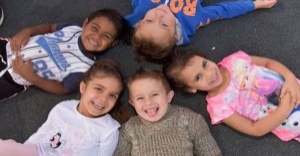 An Acknowledgment of the Country is a way of showing respect for the Traditional Owners and can be given by both non-Indigenous people and Aboriginal
An Acknowledgment of the Country is a way of showing respect for the Traditional Owners and can be given by both non-Indigenous people and Aboriginal Language plays an important role in a child’s development. It enables a child to communicate effectively with their family, learn at school, socialize with friends,
Language plays an important role in a child’s development. It enables a child to communicate effectively with their family, learn at school, socialize with friends, Like adults, children have to deal with their own stress in life. Moving house, starting a new school, preparing for a new sibling - these are
Like adults, children have to deal with their own stress in life. Moving house, starting a new school, preparing for a new sibling - these are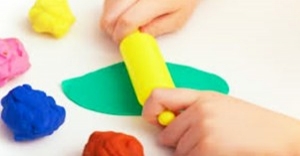 Playdough is such a versatile material. It provides numerous benefits to children as they manipulate it, it is safe and soothing and provides children with
Playdough is such a versatile material. It provides numerous benefits to children as they manipulate it, it is safe and soothing and provides children with Teaching children about sustainability enables them to appreciate and respect the natural environment. Early childhood services can provide meaningful hand on learning experiences in order
Teaching children about sustainability enables them to appreciate and respect the natural environment. Early childhood services can provide meaningful hand on learning experiences in order Recycling is an important concept that teaches children to care for the environment. It encourages children to be responsible and show a growing appreciating for
Recycling is an important concept that teaches children to care for the environment. It encourages children to be responsible and show a growing appreciating for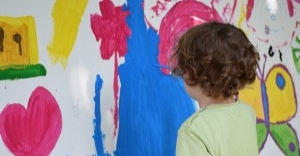 When children apply paint to paper, glue things together, or pound a lump of clay, they experiment with colour, shape design and texture.
When children apply paint to paper, glue things together, or pound a lump of clay, they experiment with colour, shape design and texture.


